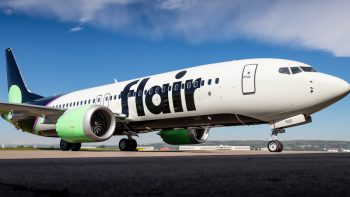
As Hurricane Rafael dealt Cuba's power grid another blow, the island is slowly returning to normal. The same cannot be said of the weather.
The 17th named storm of this year’s hurricane season pounded western Cuba with heavy rains and strong, gusty winds on 07NOV. As Rafael moves north towards the U.S., experts are astounded that such a powerful storm can be rattling across the Gulf this late in the year.
Writing on its X/Twitter account, @WeatherTrackUS said that “more intensification is expected, potentially to near Cat 4 intensity before weakening begins. What an incredible storm for November.”
It’s the first major hurricane to strike the Gulf of Mexico in November in the last 40 years. It also ties Hurricane Kate (1985) as the strongest storm in the Gulf in recorded history.
It's too early to know what might happen, but forecasters also are keeping an eye on a weather pattern that's developing north of Puerto Rico and could turn into a tropical storm early next week. If it pushes northwest, it could impact the Bahamas, Turks and Caicos and South Florida as Tropical Storm Sara.
FlightAware.com reported 11 flights in and out of Havana were cancelled on 07NOV. As of 8 a.m. ET on 08NOV, it wasn’t showing any cancellations.
Air Canada on 08NOV posted travel advisories for Holguin and Varadero. The airline said it has revised its ticketing policy to make it easier for customers travelling on an affected flight to make changes to their booking without penalty, space permitting. WestJet on 04NOV posted an advisory for Varadero flights that runs through 08NOV.
Sunwing on 04NOV said it’s extending the booking options for those travelling to Varadero and Holguin on 07NOV and 08NOV.
“Customers with travel plans to Cayo Coco and Cayo Santa Maria during this time should not expect any impact to their flights as a result of the hurricane, however we continue to encourage all travellers during this time to sign up for flight alerts and check their flight status for the most up-to-date information,” Sunwing said.
“The country's entire power network collapsed, the state-run operator UNE said, plunging the nation's 10 million people into darkness — the second full blackout on the island in the last month — with many areas still unconnected,” NBC News reports. “More than 283,000 people were evacuated, 98,300 from the capital, authorities said.”
Al Jazeera quotes Cuban authorities as saying they are slowly restoring electricity to the eastern half of the island after the entire country lost power due to the hurricane.
A Canadian couple staying in Varadero told CTV News that travellers planning to fly to Cuba should make sure their chosen hotel or resort has power before they board a plane.
A representative from the Cuba Tourist Board told Open Jaw 0n 08NOV that things are improving.
"As of this morning, the electricity is back at The Cayos, Holguin and part of the hotels in Varadero," they said. "The whole Varadero area will complete the connection by today."
The U.S. National Hurricane Center said Rafael is expected to cause “life-threatening surf and rip current conditions along the Gulf Coast for the next few days.”
The storm appeared headed toward Louisiana and Texas, but some experts are now suggesting a sharp turn to the west, which could impact south Texas and northeast Mexico. Forecasters say they don’t expect it to carry hurricane-force winds when it makes landfall.
As of 4 a.m. ET on 08NOV Rafael was roughly 585 miles (940 km’s) east of the mouth of the Rio Grande with sustained wind speeds of 120 mph, making it a Category 3 hurricane.






